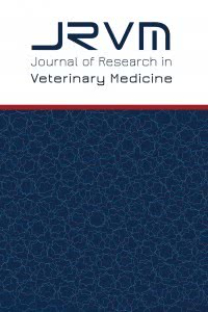DÜZGÜN OLMAYAN DESTEK VEKTÖR REGRESYONU KISITLI İKİNCİL PROBLEMİNİ ÇÖZMEK İÇİN İKİNCİ DERECEDEN BENZER BİLGİLERE SAHİP BİR ARDIŞIK ASGARİ ENİYİLEME ALGORİTMASI
Destek vektör regresyonu, Düzgün olmayan eniyileme, Çalışma kümesi seçimi, Ardışık asgari eniyileme
A Sequential Minimal Optimization Algorithm with Second-Order like Information to solve a Non-Smooth Support Vector Regression Constrained Dual Problem
Support vector regression, Sequential minimal optimization, Non-smooth optimization, Working set selection,
___
- 1. Abe, S. (2015) Optimizing working sets for training support vector regressors by Newton’s method, International joint conference on neural networks, IJCNN, Killarney, Ireland. doi:10.1109/IJCNN.2015.7280309
- 2. Abe, S. (2016) Fusing sequential minimal optimization and Newton’s method for support vector training, International Journal of Machine Learning and Cybernetics, 7(3), 345–364. doi:10.1007/s13042-014-0265-x
- 3. Barbero, A., Lopez, J, ve Dorronsoro, J.R. (2009) Cycle-breaking acceleration of SVM training, Neurocomputing, 72(7–9), 1398–1406. doi:10.1016/j.neucom.2008.12.014
- 4. Barbero, A. ve Dorronsoro, J.R. (2011) Momentum sequential minimal optimization: an accelerated method for support vector machine training, International joint conference on neural networks, IJCNN. doi:10.1109/IJCNN.2011.6033245
- 5. Boser, B., Guyon, I. ve Vapnik, V. (1992) A training algorithm for optimal margin classifiers, Proceedings of the fifth annual workshop on Computational Learning Theory, 144–152. doi:10.1145/130385.130401
- 6. Bottou, L. ve Lin C.J. (2007) Support vector machine solvers in Large scale kernel machines, MIT Press, Cambridge.
- 7. Cortes, C. ve Vapnik, V. (1995) Support-vector network, Machine Learning, 20, 273–297.
- 8. Fan, R.E., Chen, P.H. ve Lin, C.J. (2005) Working set selection using second order information for training support vector machines, Journal of Machine Learning Research, 6, 1889–1918.
- 9. Flake, G.W. ve Lawrence, S. (2001) Efficient SVM regression training with SMO, Machine Learning, 46(1), 271–290. doi:10.1023/A:1012474916001
- 10. Guo, J., Takahashi, N. ve Nishi, T. (2006) A novel sequential minimal optimization algorithm for support vector regression, Lecture Notes in Computer Science, 4232, 827–836. doi:10.1007/11893028_92
- 11. Keerthi, S.S., Shevade, S.K., Bhattacharyya, C. ve Murthy, K.R.K. (2001) Improvements to Platt’s SMO algorithm for SVM classifier design, Neural Computation, 13(3), 637–649. doi:10.1162/089976601300014493
- 12. Kocaoğlu, A. (2019) An Efficient SMO Algorithm for Solving Non-smooth Problem Arising in ε-Insensitive Support Vector Regression, Neural Processing Letters, 50, 933–955. doi:10.1007/s11063-018-09975-3
- 13. Kumar, B., Sinha, A., Chakrabarti, S. ve Vyas, O. P. (2021) A fast learning algorithm for One-Class Slab Support Vector Machines, arXiv: 2011.03243. https://arxiv.org/abs/2011.03243 doi:10.1016/j.knosys.2021.107267
- 14. Lin, C.J. (2001) On the convergence of the decomposition method for support vector machines, IEEE Transactions on Neural Network, 12(6), 1288–1298. doi: 10.1109/72.963765
- 15. Lopez, J. ve Dorronsoro, J.R. (2012) Simple proof of convergence of the SMO algorithm for different SVM variants, IEEE Transactions on Neural Networks and Learning Systems, 23(7), 1142–1147. doi:10.1109/TNNLS.2012.2195198
- 16. Noronha, D.H., Torquato, M.F. ve Fernandes, M.A.C. (2019) A parallel implementation of sequential minimal optimization on FPGA, Microprocessors and Microsystems, 69, 138-151. doi: 10.1016/j.micpro.2019.06.007
- 17. Platt, J.C. (1998) Fast training of support vector machines using sequential minimal optimization in Kernel methods: support vector machines, MIT Press, Cambridge. 18. Ruszczynski, A. (2006) Nonlinear Optimization, Princeton, NJ: Princeton University Press. ISBN 978-0691119151. MR 2199043.
- 19. Shawe Taylor, J. ve Sun, S. (2011) A review of optimization methodologies in support vector machines, Neurocomputing, 74(17), 3609-3618. doi: 10.1016/j.neucom.2011.06.026
- 20. Smola, A.J. ve Schölkopf, B. (2004) A tutorial on support vector regression, Statistics and Computing, 14(3), 199–222. doi: 10.1023/B:STCO.0000035301.49549.88
- 21. Takahashi, N., Guo, J. ve Nishi, T. (2006) Global convergence of SMO algorithm for support vector regression, IEEE Transactions on Neural Network, 19(6), 971–982. doi:10.1109/TNN.2007.915116
- 22. Vapnik, V.N. (1998) Statistical Learning Theory, Wiley, New York, USA.
- ISSN: 2148-4147
- Yayın Aralığı: 3
- Başlangıç: 2002
- Yayıncı: BURSA ULUDAĞ ÜNİVERSİTESİ > MÜHENDİSLİK FAKÜLTESİ
Togay KÜPELİ, Büşra UZUN, Mustafa Özgür YAYLI, Yakup Harun ÇAVUŞ
SATIN ALMA FAALİYETLERİ İÇİN ANALİTİK HİYERARŞİ PROSESİ YÖNTEMİ İLE TEDARİKÇİ SEÇİMİ
VOLKAN SÖNMEZ, Gözde TANDOĞAN ÖNEY
YÜKSEK MUKAVEMETLİ ÇELİKLERDE LAZER KAYNAĞI UYGULAMALARI
Tuncay ALPAR, Oktay ÇELENK, KADİR ÇAVDAR
Samet KABACAOĞLU, Mahmut PEKEDİS, HASAN YILDIZ
BULUT DESTEKLİ MEDİKAL NESNELERİN İNTERNETİ TABANLI UZAKTAN SAĞLIK İZLEME SİSTEMİ
Pegah DADRAS, Saeid ZARDARI, Amir SHAHKAR
BALIKESİR ÜNİVERSİTESİ KAMPÜSÜNE AİT GÜRÜLTÜ SEVİYELERİNİN CADNAA İLE MODELLENMESİ
Ömer Mert BAYRAKTAR, ATİLLA MUTLU
TURİZM SEKTÖRÜNDE YÖNETİCİ SEÇİMİNE YÖNELİK ÇOK KRİTERLİ BİR YAKLAŞIM
PARABOLİK OLUK TİPİ GÜNEŞ KOLLEKTÖRLERİNİN ISIL ANALİZİ VE PARAMETRİK İNCELENMESİ
